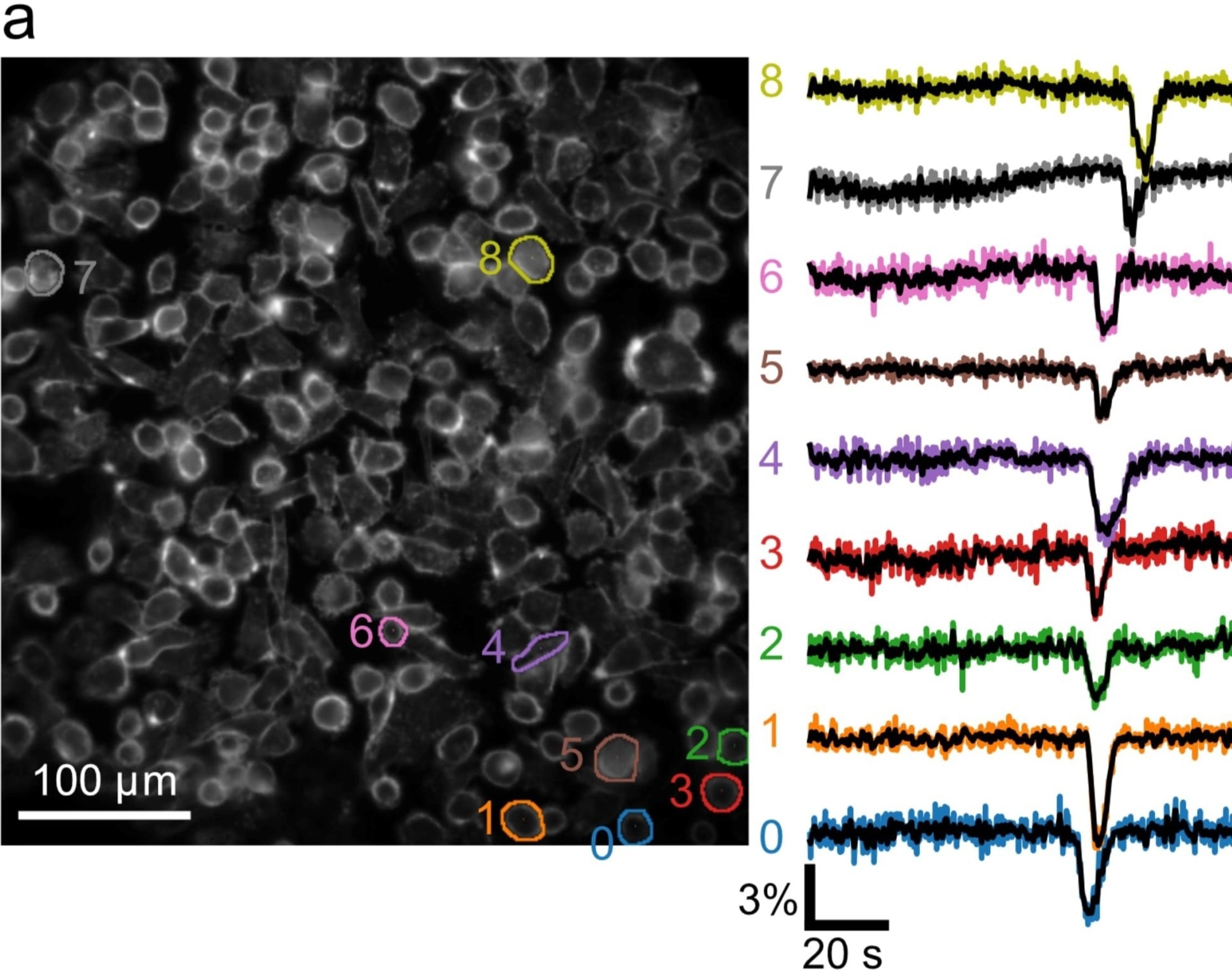Recent research has discovered that the membranes of breast cancer cells have varying voltages, revealing information regarding their growth and spread.
 A wave of voltage fluctuations seen across the cells. Image Credit: Foust et al.
A wave of voltage fluctuations seen across the cells. Image Credit: Foust et al.
The study, headed by Imperial College London and The Institute of Cancer Research, London, might help learn more about how cancer cells “decide” whether to grow and where to spread.
When cells become malignant, they go through a sequence of bioelectric alterations. The layer surrounding cells, known as the cell membrane, for instance, becomes more positively charged than healthy cell membranes.
This recent study, published today in Communications Biology, discovered that not only is the membrane voltage higher in breast cancer cells than in healthy cells, but it also changes over time, with breast cancer cells acting similarly to neurons.
When healthy cells become cancerous, the changes they undergo can help them to grow and spread. We know, for example, that certain genes that control cell multiplication can switch off, causing uncontrolled cell growth. We don't yet know why the voltage of membranes fluctuates in cancer cells but our discovery and technology, enabled by the exciting collaboration of engineers and biologists, opens doors to further work that could help us better understand cancer signaling networks and growth.”
Dr Amanda Foust, Study Co-Lead Author, Department of Bioengineering, Imperial College London
Testing the network
Scientists cultured cells from eight breast cancer cell lines and one healthy breast cell line to evaluate the voltages. They then used machine learning to categorize and characterize the signals by recording the voltages of their cell membranes with a microscope specifically designed to monitor electrical activity in brain cells.
Remarkably, scientists discovered changes in the voltage of cancer cell membranes. Though further research is needed, scientists think the “blinking” and “waving” electrical signals are a kind of cell communication.
They used tetrodotoxin, a powerful neurotoxin that inhibits sodium channels, preventing electrical charge production in nerve cells. Previous research has demonstrated that cancer cells use sodium channels to become more invasive.
Researchers discovered that, like its impact on nerve cells, tetrodotoxin reduced voltage fluctuations in cancer cells. According to the investigators, this could point to novel therapeutic options for preventing cancer cell communication and behavior.
This is the first time we’ve observed such rapid fluctuations in electrical activity within breast cancer cells. It looks like breast cancer cells have established a type of electrical language. We still don’t know how complex the language is, but it could allow cancer cells to relay information about nearby nutrients or hostile environments across large distances, and ultimately promote tumor survival.”
Chris Bakal, Study Co-Lead Author and Professor, Cancer Morphodynamics, The Institute of Cancer Research
To put their findings to the test, they generated malignancy in the healthy cell line before recording them again. They discovered that as these cells became malignant, the voltage of their membranes fluctuated as well.
The intensity of electrical signals varied according to cancer type. The more invasive and incurable cancer cell lines had more frequent variations, with signals appearing as a wave flowing from cell to cell.
Of all the cells in the body, we usually associate ‘excitable’ brain or heart cells with electrical activity. Our research suggests a hidden electrical signaling network among cancer cells that might play a key role in cancer cell behavior including communication with each other and other cells within the tumor. We know already that the spreading of cancer, the main cause of death from cancer, is facilitated by electrical activity.”
Mustafa Djamgoz, Study Co-Author and Emeritus Professor, Department of Life Sciences, Imperial College London
“We think these networks may even allow cancer cells to form brain-like structures that allow cancer cells to act together as a single machine, rather than as individual units,” stated Professor Bakal.
Connecting the clues
The investigators are now attempting to uncover and dissect the potential linkages between cell membrane voltage and cancer cell behavior to see if these may be severed.
“If you can stop cancer cells communicating with one another, they could become easier to treat. It’s not so dissimilar from a war. If you can stop a commander from relaying information to soldiers at the front, the battle becomes easier to win,” states Professor Bakal.
Dr Foust concludes, “We are now investigating the role of voltage in cancer cell behavior. Do cancer cells clone themselves and multiply as their voltage fluctuates in a certain pattern, or break off to invade other body parts? Can we use this knowledge to interject at a particular stage of fluctuation to prevent cancer spread? These are key questions we hope to answer with our ongoing work.”
‘Blinking’ electrical signals might give clues about how breast cancer progresses
Video Credit: Imperial College London
Source:
Journal reference:
Quicke, P., et al. (2022) Voltage imaging reveals the dynamic electrical signatures of human breast cancer cells. Communications Biology. doi.org/10.1038/s42003-022-04077-2.